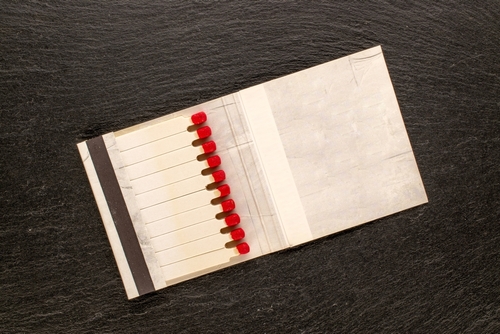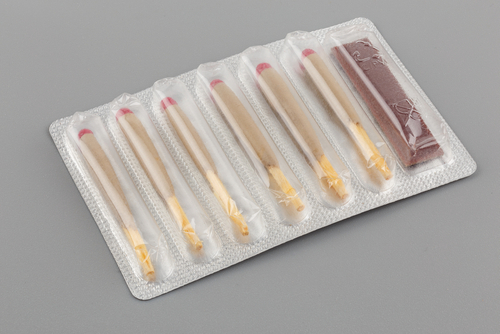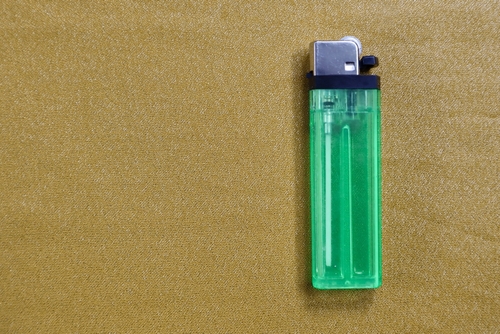Traveling can be an exciting time, and it’s easy to pack everyday items in your luggage and forget all about them—a simple book of matches, for instance, just in case. It’s not until you’ve checked your luggage that you remember those matches buried at the bottom of your suitcase. Suddenly it dawns on you—can you bring matches on a plane?
Sometimes it can feel like we’re decoding a secret language when it comes to air travel rules. We also don’t always think of simple items as dangerous. Although the Transportation Security Administration (TSA) guidelines are straightforward, they’re updated frequently to ensure passenger safety. That means boxes of matches might be allowed one day and prohibited the next.
If you’re getting ready for a trip, don’t stress, because Remitly is here to break it all down. Our guide covers which matches you can bring on a plane, the types of matches you should avoid, and international rules.
TSA rules for matches: what’s allowed and what’s a hard no
No one wants their items confiscated or their checked luggage opened after it’s already been dropped off. The good news is that match regulations are clear and easy to understand. Once you know the rules, you can pack confidently and travel stress-free.
The one-book rule: matches in carry-on only
The TSA states on its official site that you may bring one book of safety matches in your carry-on bag. The same information can also be found on the Federal Aviation Administration (FAA) website.
Here’s a quick breakdown:
- You cannot pack safety matches in checked baggage.
- You cannot pack strike-anywhere matches in any baggage.
- You cannot bring more than one book of matches on a plane.
The rules are simple, and if you follow them, you should pass through TSA smoothly.
Flashback facts: when matches (and cigarettes) were everywhere on planes
Air travel before the 1990s was very different, and not just because of the extra legroom.
Here are some interesting facts about flying back then that you may not have known:
- Planes had designated smoking sections, and yes, people smoked throughout the entire flight.
- Flight attendants handed out free cigarettes during service.
- Travelers could board with multiple boxes of cigarettes, matches, and even lighters without a second glance from TSA.
While many of us would welcome the additional legroom, most travelers today appreciate smoke-free cabins—for both health and safety reasons.
This also shows how safety regulations have evolved over time to protect the passengers and flight crew on board.
Types of matches and travel restrictions: know the difference before you pack
Not all matches are created equal. Understanding which types are allowed on planes can make traveling much smoother. No one wants to be stopped by the TSA, so let’s look at the different kinds of matches to help ensure you’ve packed the correct ones.
Safety matches: the only match type TSA allows

Safety matches are often seen in small cardboard boxes or paper booklets. They only ignite when struck on the dark, reddish strip on the side of the box.
If you’re unsure whether the matches you have are safety matches, here are a few things to look for:
- They come in small books or rectangular boxes.
- They’re labeled “safety” or “non-strike matches.”
- The striking strip is on the box or booklet.
If you need to bring matches when you travel, safety matches are the only type that the TSA allows.
Strike-anywhere matches

TSA prohibits strike-anywhere matches entirely.
These matches can be ignited on any rough, dry surface, making them very easy to light—even when not being handled. Because they require so little friction to ignite, they can spark from cabin pressure, shifting during the flight, or simply from rough handling as luggage is loaded on and off the plane.
In the past, many strike-anywhere matches were easy to spot thanks to their green tips. The well-known manufacturer Diamond produced the popular green-tipped version, which was sold almost everywhere. However, these days, they’re harder to find, and it’s not because they’ve been discontinued, but because they’re mostly sold in stores.
The United States Postal Service (USPS), for example, no longer delivers these matches by mail due to the risk of them igniting during transit.
As you can see, for both the TSA and USPS, safety is the main priority. Improperly packed strike-anywhere matches, especially in checked luggage, can create serious hazards.
Look for these signs that your matches are strike-anywhere:
- The match has a green or white tip.
- Labels such as “strike-anywhere,” “survival,” or “windproof.”
- Often thicker than safety matches.
What about stormproof matches?

For seasoned campers and hikers, it might be easy to notice the difference, but for many, “stormproof” labels can be confusing.
You might see matches labeled as:
- Camping matches
- Waterproof matches
- Stormproof matches
Most of these are classed as strike-anywhere, which means they aren’t allowed on a plane, even if they’re in a plastic container.
Camping-friendly doesn’t always mean TSA-friendly. When in doubt, the best thing to do is assume the matches aren’t allowed and search out ones that are clearly marked safety matches.
How to pack matches for air travel (and not get flagged at TSA)
Now that you know which matches are allowed and which bag to carry them in, the next step is packing them properly to avoid delays at security.
Where to pack your matches
The easiest way to pack a book of safety matches is to put it in an easily accessible location, such as a small pocket in your backpack or bag. This way, if the TSA stops you, you can easily pull out the matchbook without having to dig through your bag or pocket.
If your carry-on bag needs to be checked when you’re already at the gate, be sure to remove the matches and keep them with you on the flight.
What to expect during TSA screening
Even though one book of safety matches is allowed, your bag might still be flagged for inspection.
TSA officers may:
- Ask you to remove them to inspect the label and confirm they’re safety matches.
- Ask questions if they appear to be strike-anywhere.
- Require you to discard them if they feel the matches pose a safety risk due to unclear packaging.
Tips for passing through security smoothly:
- Keep matches accessible and separate from lighters.
- Avoid novelty matches as they may fall under prohibited categories or cause confusion if not properly labeled.
- If the TSA stops you for a random bag check, be proactive and let them know you have one book of safety matches in your carry-on.
- Avoid loose matches, as they’ll likely be confiscated if your carry-on bag is checked.
Luggage check: flying with matches in the right bag
Now that we’ve gone over all the differences and rules between strike and safety matches, here’s an overview:
| Luggage type | Safety matches | Strike-anywhere matches |
| Carry-on | One book permitted | Prohibited |
| Checked luggage | Prohibited | Prohibited |
Alternatives for matches: smart options for travelers
Even though you can fly with one book of matches in your carry-on, there are alternative options that might be easier and less stressful.
Lighters: a surprisingly simple option

Like safety matches, the TSA allows certain types of lighters to be brought on board the plane.
Here are the types of lighters allowed in your carry-on bag:
- One disposable lighter (such as a Bic)
- Zippo lighters without fuel
- Rechargeable lighters must have the cap on and battery removed; lithium batteries must not exceed two grams or 100 Wh.
Torch and jet flame lighters are banned completely and should not be placed in either your carry-on or checked luggage.
Like safety matches, ensuring your lighter is properly stored and easy to retrieve from your carry-on will make things a bit easier if your bag is checked by TSA.
International travel considerations: not all countries follow TSA guidelines
Checking TSA guidelines before your flight is a great way to ensure you pack properly for your trip. However, if you’re traveling internationally, you’ll want to check the rules in your destination country as well. Many regulations overlap, but other countries have their own safety measures and restrictions in place.
Virgin Australia prohibits both safety and strike-anywhere matches in your carry-on or checked luggage. This is why it’s a good idea to check the rules for the destination you’re flying to. Following local regulations helps you avoid fines, confiscation, or other legal issues.
If you have any doubts, start with your airline’s website, as they’ll have a list of restricted items.
Travel smart: know before you go
Don’t let the excitement of a trip be overshadowed by packing mistakes. Matches, liquids, and snacks all have specific restrictions when it comes to flying. That’s why we encourage travelers to be proactive, from packing to visas, as no one likes being caught off guard.
If the TSA stops you, let them know about your matches or anything else that may require a more thorough search of your bag. It’s all about safety and getting everyone where they need to go without hiccups, and hopefully no turbulence.
Need more safety tips for traveling? Check out our blog for more!
FAQs
Can you bring matches in your carry-on bag?
Yes, the TSA allows you to bring one book of safety matches in your carry-on.
Are strike-anywhere matches allowed on planes?
No. The TSA prohibits strike-anywhere matches in both carry-on and checked luggage.
What happens if the TSA finds matches in your checked luggage?
If the TSA finds matches in your checked luggage during screening, your luggage will most likely be opened, and the matches will be confiscated.
Do match rules differ for international flights?
Different countries have different restrictions. It’s best to check both the TSA website and the website of your destination country to see which rules or regulations may apply to you.

